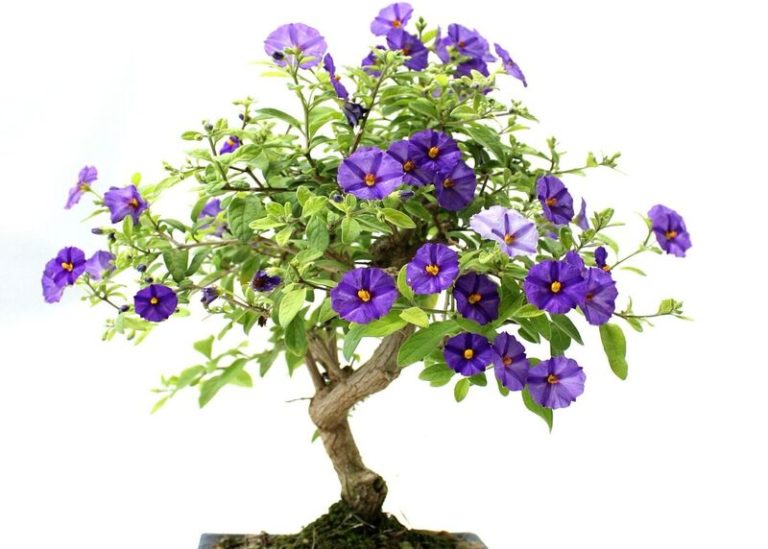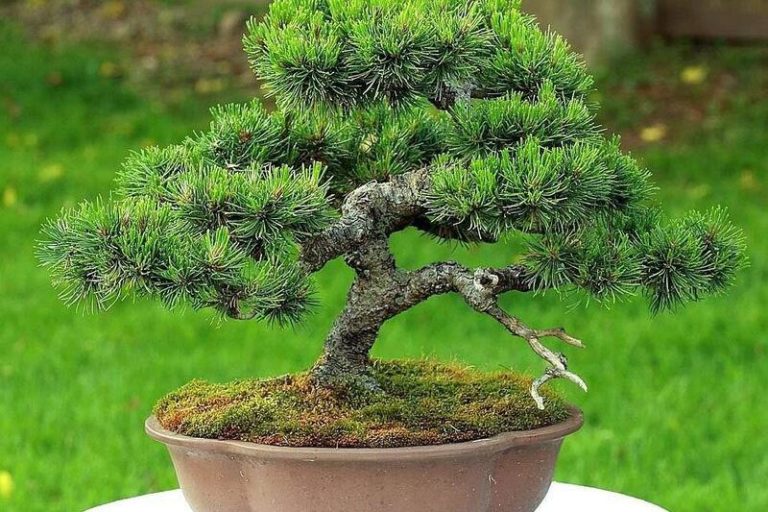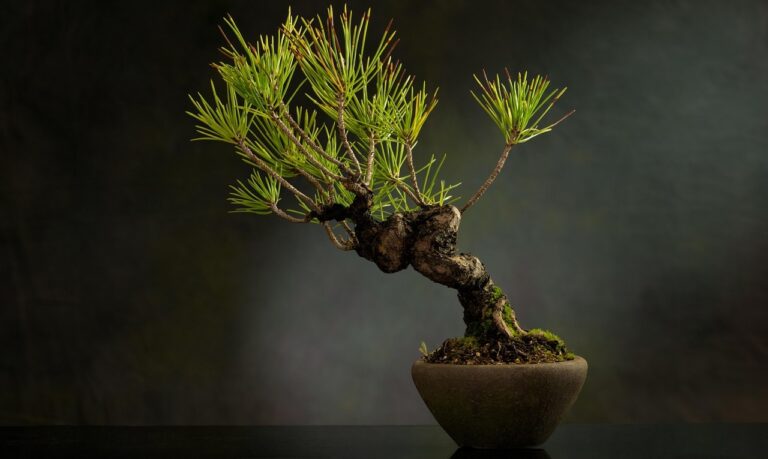Alberta Spruce Bonsai: The Perfect Tree for Bonsai Enthusiasts
Alberta spruce bonsai are small, popular trees that are grown in pots for their decorative value. The tree is native to North America, and its dense, bright green leaves and small size make it a great choice for people who like to grow bonsai.
What is Alberta Spruce Bonsai?
The Alberta spruce bonsai is a type of small tree produced and trained in the bonsai art form. The plant is a cultivar of the Picea glauca species, sometimes known as white spruce or Alberta spruce. The Alberta spruce bonsai is well-known for its thick, compact growth habit and tolerance of freezing temperatures.
Due to their distinctive shape, diminutive size, and capacity to be cultivated both indoors and outdoors, Alberta spruce bonsai trees are well-liked by bonsai aficionados. They can be utilized as part of a larger bonsai collection or for exhibition in constrained areas like a tabletop or windowsill.
Types of Alberta Spruce Bonsai
There are a few different cultivars of the Alberta spruce bonsai that are commonly available:
- Conica: This is the most popular cultivar of Alberta spruce bonsai. It has a compact, conical growth habit and dense, bright green foliage.
- Dwarf Globe: This cultivar is smaller than ‘Conica’, with a more rounded, globe-shaped growth habit. It also has dense, bright green foliage.
- Pixie Dust: This cultivar has unique, variegated foliage that is a mix of green and white. It has a compact, conical growth habit.
- Rainbow’s End: This cultivar also has variegated foliage, with green, yellow, and white colors. It has a more irregular, spreading growth habit than the other cultivars.
- Tiny Tower: This cultivar is similar to ‘Conica’, but has a more narrow, upright growth habit that resembles a miniature Christmas tree.
All of these cultivars are relatively slow-growing and can be trained into a variety of bonsai styles, including formal upright, informal upright, and cascading.
Characteristics of Alberta Spruce Bonsai
The Alberta spruce bonsai has several characteristics that make it an attractive choice for bonsai enthusiasts:
- Compact growth habit: The Alberta spruce bonsai has a natural conical or spherical shape that makes it ideal for creating a small, compact bonsai tree.
- Evergreen foliage: The tree’s lush, vivid green foliage remains on the tree all year, making it an appealing addition to indoor or outdoor bonsai displays.
- Cold-hardy: Because the Alberta spruce bonsai can withstand freezing conditions, it is an excellent choice for outdoor bonsai enthusiasts in colder climes.
- Slow-growing: The tree grows relatively slowly, which allows bonsai enthusiasts to take their time in training and shaping the tree into their desired form.
- Adaptability: The Alberta spruce bonsai can tolerate a broad range of growth circumstances, making it an excellent choice for both rookie and professional bonsai growers.
- Fine needles: The tree’s needles are short and fine, giving it a delicate appearance that is highly prized in bonsai cultivation.
The Alberta spruce bonsai is a lovely and flexible tree that can be trained into several bonsai styles, from formal to informal, and grows well indoors and outdoors.
How to Grow Alberta Spruce Bonsai
Here are the general steps to grow an Alberta spruce bonsai:
- Choose a healthy tree: Select a young, healthy Alberta spruce sapling with a straight trunk and a good root system. The tree should have evenly spaced branches with no signs of disease or damage.
- Choose a container: Choose a container that is appropriate for the size of the tree and the desired bonsai style. The container should have drainage holes to prevent water from accumulating in the soil.
- Prepare the soil: Alberta spruce bonsai trees prefer well-draining, slightly acidic soil. Mix together equal parts of peat moss, sand, and perlite to create a suitable soil mixture.
- Repot the tree: Gently remove the tree from its current container and carefully prune the roots. Place the tree into the new container and fill it with the prepared soil mixture.
- Water the tree: Water the tree thoroughly, making sure that the soil is evenly moist. Do not allow the soil to dry out completely, as this can damage the tree.
- Prune the tree: As the tree grows, prune the branches and foliage to create the desired bonsai shape. Alberta spruce bonsai trees respond well to pruning, and frequent trimming will encourage new growth and help maintain the tree’s shape.
- Fertilize the tree: Fertilize the tree every two weeks during the growing season with a balanced, water-soluble fertilizer.
- Provide adequate light: Alberta spruce bonsai trees prefer bright, indirect light. Place the tree in a location that receives plenty of light, but avoid direct sunlight during the hottest part of the day.
With proper care and attention, an Alberta spruce bonsai can grow into a beautiful and unique addition to your bonsai collection.
Benefits of Alberta Spruce Bonsai
The Alberta spruce bonsai has several benefits that make it a popular choice for bonsai enthusiasts:
- Aesthetically pleasing: The tree’s compact growth habit, evergreen foliage, and delicate appearance make it an attractive addition to indoor or outdoor bonsai displays.
- Suitable for small spaces: The Alberta spruce bonsai’s small size and adaptability to container growing make it a great choice for those with limited indoor or outdoor space.
- Therapeutic value: Bonsai cultivation can be a relaxing and rewarding hobby, and the process of caring for a living plant can have therapeutic benefits for both the mind and body.
- Educational value: Growing and training an Alberta spruce bonsai can teach valuable lessons about plant care, patience, and the art of bonsai cultivation.
- Cold-tolerant: The Alberta spruce bonsai can handle cold weather, which makes it a great choice for people who want to grow bonsais outside but live in a cooler climate.
- Adaptable: The Alberta spruce bonsai is a fantastic option for both inexperienced and seasoned bonsai growers since it can thrive in a variety of growth environments.
- Long lifespan: An Alberta spruce bonsai may thrive for many years with careful care, offering a feeling of continuity and stability in a constantly shifting environment.
The Alberta spruce bonsai, in general, provides bonsai fans with a variety of advantages, from its aesthetic appeal to its therapeutic and educational value.
How to Care and Maintenance for Alberta Spruce Bonsai
Here are some tips for caring and maintaining your Alberta spruce bonsai:
- Watering: Alberta spruce bonsai trees require consistent, even moisture. Water the tree thoroughly when the soil feels slightly dry to the touch, but avoid over-watering, as this can lead to root rot.
- Fertilizing: Fertilize your Alberta spruce bonsai every two weeks during the growing season with a balanced, water-soluble fertilizer. Reduce fertilization during the winter months.
- Pruning: Alberta spruce bonsai trees respond well to pruning, and frequent trimming will encourage new growth and help maintain the tree’s shape. Prune the branches and foliage regularly to create the desired bonsai form.
- Light: Alberta spruce bonsai trees prefer bright, indirect light. Place the tree in a location that receives plenty of light, but avoid direct sunlight during the hottest part of the day.
- Humidity: Alberta spruce bonsai trees prefer high humidity levels. To maintain the proper humidity, mist the tree daily with water, or place a humidity tray filled with water and pebbles beneath the tree.
- Repotting: Every two to three years, or whenever the roots overflow the existing container, you should repot your Alberta spruce bonsai. Choose a well-draining soil combination and a somewhat larger container than the one you already have.
- Winter care: Bonsai trees made from Alberta spruce are hardy in cold climates, but they still need to be sheltered from the extreme cold and drying winds. During the colder months, bring the tree indoors or to a sheltered area like a shed or garage.
Alberta Spruce BonsaiCare Sheet
| Aspect | Care Tips |
|---|---|
| Watering | Water the tree thoroughly when the soil feels slightly dry to the touch. Avoid over-watering. |
| Fertilizing | Fertilize every two weeks during the growing season with a balanced, water-soluble fertilizer. Reduce fertilization during winter. |
| Pruning | Prune regularly to maintain the desired shape and encourage new growth. |
| Light | Place the tree in a location that receives bright, indirect light. Avoid direct sunlight during the hottest part of the day. |
| Humidity | Maintain high humidity levels by misting the tree daily with water or using a humidity tray. |
| Repotting | Repot every two to three years, or when the roots have outgrown the current container. Use a well-draining soil mixture. |
| Winter care | Protect from severe cold and drying winds. Move the tree to a protected location during the winter months. |
By following these care and maintenance tips, you can ensure that your Alberta spruce bonsai tree remains healthy and attractive for many years to come.
Conclusion:
The Alberta spruce bonsai is a popular and adaptable tree that can live for many years with proper care and maintenance. It prefers consistent moisture, frequent fertilization, and regular pruning to maintain shape and encourage growth. It also needs bright, indirect light and high humidity levels. Repotting every two to three years and protecting from cold and wind during the winter months are important. Overall, the Alberta spruce bonsai is a rewarding and enjoyable choice for bonsai enthusiasts of all levels.
FAQ:
Q: Is the Alberta spruce bonsai easy to care for?
A: Yes, the Alberta spruce bonsai is relatively easy to care for as long as its basic needs are met, such as consistent moisture, regular pruning, and appropriate fertilization.
Q: Can Alberta spruce bonsai trees be grown indoors?
A: Yes, Alberta spruce bonsai trees can be grown indoors as long as they receive bright, indirect light and high humidity levels.
Q: How often should I water my Alberta spruce bonsai?
A: Water your Alberta spruce bonsai thoroughly when the soil feels slightly dry to the touch. Avoid over-watering, as this can lead to root rot.
Q: How often should I fertilize my Alberta spruce bonsai?
A: Fertilize your Alberta spruce bonsai every two weeks during the growing season with a balanced, water-soluble fertilizer. Reduce fertilization during the winter months.
Q: How often should I prune my Alberta spruce bonsai?
A: Prune your Alberta spruce bonsai regularly to maintain the desired shape and encourage new growth. The frequency of pruning will depend on the tree’s growth rate and the desired shape.
Q: When should I repot my Alberta spruce bonsai?
A: Repot your Alberta spruce bonsai every two to three years, or when the roots have outgrown the current container.
Q: Can I keep my Alberta spruce bonsai outside during the winter?
A: While bonsai trees crafted from Alberta spruce may survive the winter months without heating, they still need protection from the bitter cold and harsh winds. During the colder months, bring the tree indoors or to a sheltered area like a shed or garage.
Also Read:
Bonsai Driftwood: A Natural Alternative to Artificial Aquarium Décor








